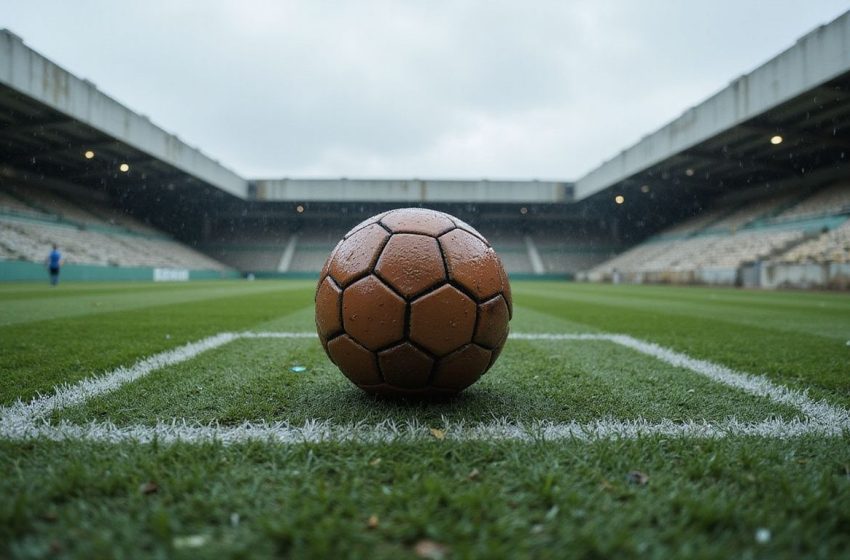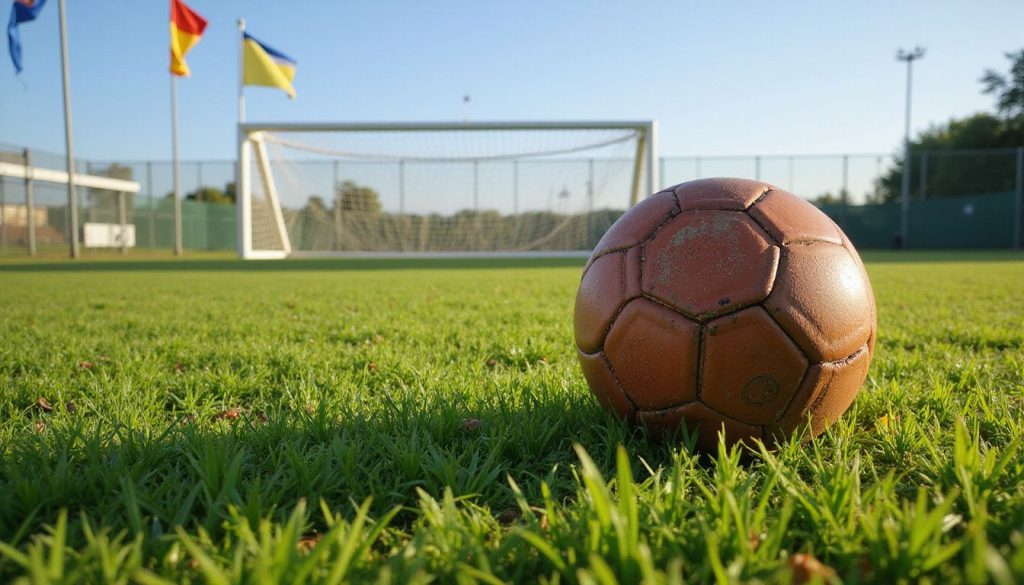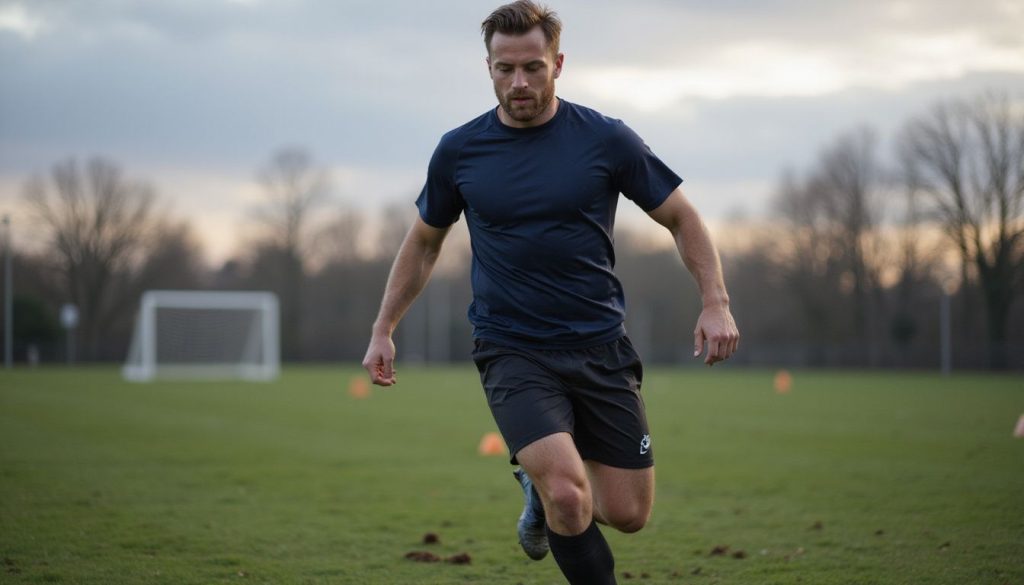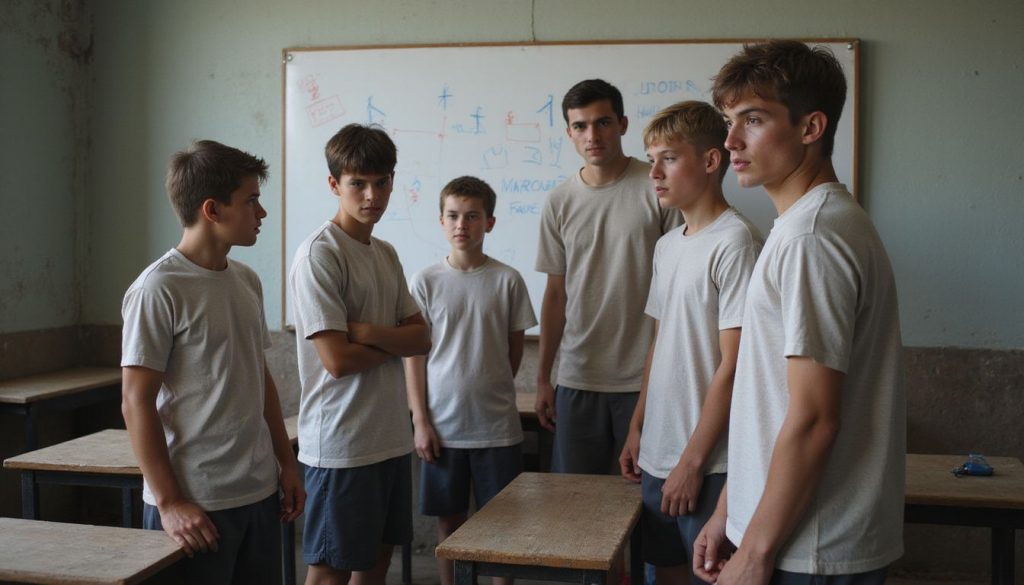The Psychology of a Penalty Shootout: Understanding the Mental Game Behind the Pressure

Watching your favorite player step up for a crucial penalty kick can make your heart race faster than any other moment in soccer. Research shows that penalty takers score only 75% of their shots during high-pressure shootouts, compared to 85% in regular game situations.
This guide breaks down the psychology of a penalty shootout and reveals the mental strategies that separate successful penalty takers from those who crack under pressure. The mind game starts before the player even touches the ball.
The Mental Pressure of a Penalty Shootout

Penalty shootouts create intense mental pressure that can break even the most skilled players. The weight of an entire match rests on a single spot kick, making decision-making harder and causing many athletes to freeze under the spotlight.
How pressure impacts decision-making
Pressure transforms how players make decisions during penalty shootouts. High-stakes scenarios create tunnel vision that narrows focus to just a few options. Players often rush their choices instead of thinking clearly.
The brain releases stress hormones that cloud judgment and reduce reaction time. This biological response makes simple decisions feel impossible. Many players fixate on the goalkeeper instead of picking their target spot early.
Elite athletes describe feeling their heart race and hands shake before taking spot kicks. The weight of an entire match outcome creates mental overload. Players second-guess their usual penalty technique under extreme pressure.
Some freeze completely while others act too quickly without proper planning. The coin toss that determines penalty order adds another layer of stress. Each missed penalty increases pressure on teammates who follow.
Smart players learn to slow down their breathing and stick to practiced routines despite the chaos around them.
The role of high-stakes scenarios in performance
Pressure affects how players think and choose during penalty kicks, but high-stakes scenarios create an even more complex mental challenge. These moments test every aspect of a player’s psychological preparation and emotional control.
High-stakes penalty shootouts trigger intense physical and mental responses in players. Heart rates spike to extreme levels. Muscles tense up. The brain releases stress hormones that can cloud judgment.
Players like Marcus Rashford and Roberto Baggio have experienced these effects firsthand during crucial penalty situations. The body’s natural fight-or-flight response kicks in, making simple tasks feel incredibly difficult.
Sport psychology research shows that performance often drops when stakes are highest. Players who normally score penalties with ease suddenly struggle with basic technique. The shootout environment amplifies every small mistake and magnifies self-doubt.
Goal keepers like Jordan Pickford and David de Gea understand this dynamic and use it to their advantage through strategic body language and positioning.
Mental Preparation for Players
Players need strong mental tools to handle the stress of penalty kicks. Sport psychologists teach athletes how to control their minds before they step up to take the shot.
Techniques for managing stress and anxiety
Managing stress and anxiety during penalty kicks requires specific mental techniques that help players stay calm under pressure. Sport psychology research shows that proper mental preparation can significantly improve performance in high-stakes penalty shootout situations.
- Practice deep breathing exercises before taking the penalty kick to slow your heart rate and reduce physical tension in your body.
- Use visualization techniques to imagine yourself scoring the perfect penalties repeatedly, creating positive mental images that boost confidence.
- Develop a consistent pre-penalty routine that includes the same steps every time, helping your mind focus on familiar actions rather than pressure.
- Focus on target areas of the goal instead of fixating on goalkeeper movements or potential negative outcomes during the approach.
- Apply self-regulation strategies to control negative thoughts by replacing them with positive affirmations about your shooting ability.
- Train with high-pressure scenarios during practice sessions to simulate the emotional intensity of actual penalty shoot-out situations.
- Work with a sport psychologist to develop personalized coping mechanisms that address your specific anxiety triggers and stress responses.
- Use progressive muscle relaxation techniques to release physical tension in your shoulders, legs, and shooting foot before the kick.
- Employ mindfulness meditation to stay present in the moment rather than worrying about consequences or past missed penalties.
Visualization and mental rehearsal strategies
Stress management techniques create the foundation for peak performance, but players need specific mental tools to execute perfect penalties. Visualization and mental rehearsal strategies transform anxiety into confidence through intentional practice of successful outcomes.
- Create detailed mental images of successful penalty kicks before stepping up to the spot. Envision the ball hitting your target corner while the goalkeeper dives the wrong way. This mental preparation helps your brain recognize the successful pattern.
- Practice your penalty routine mentally at least 50 times before each shootout scenario. Go through your approach, breathing pattern, and follow-through in your mind. Mental repetition builds muscle memory without physical fatigue.
- Envision different goalkeeper movements and your responses to each scenario. See yourself scoring against diving keepers, stationary goalkeepers, and those who try psychological tactics. This preparation reduces surprise during actual penalty situations.
- Use all five senses during your mental rehearsal sessions for maximum effectiveness. Hear the crowd noise, feel the grass under your feet, and smell the stadium air. Complete sensory engagement makes visualization more realistic and impactful.
- Rehearse your emotional responses to both successful and missed penalties mentally. Practice staying calm after scoring and recovering quickly from misses. Emotional preparation prevents mental collapse during high-pressure moments.
- Create specific trigger words or phrases that activate your confident mental state. Choose simple commands like “corner pocket” or “my spot” that instantly connect you to successful visualizations. These anchors work faster than complex mental processes.
- Conduct visualization sessions in similar environments to match day conditions. Train your mental imagery in noisy spaces or under bright lights when possible. Environmental familiarity reduces stress and improves focus during actual penalty shootouts.
- Pair physical practice with mental rehearsal for compound learning benefits. Take actual penalties while running your visualization routine simultaneously. This dual approach strengthens both mental and physical execution pathways.
Goalkeeper Psychology
Goalkeepers face unique mental challenges during penalty shootouts that differ from regular gameplay. Their psychology centers on making split-second decisions while managing the pressure of being the last line of defense.
Research shows that goalkeepers who view penalties as opportunities rather than threats perform better under pressure. The color of goalkeeper kits can influence penalty takers’ decisions, with studies suggesting red goalkeeper kits create more intimidation than blue or green alternatives.
Action bias and decision-making under pressure
Goalkeepers face intense pressure during penalty kicks. They must make split-second choices that can decide entire matches. Action bias drives many keepers to dive left or right instead of staying in the center.
This happens because moving feels more natural than standing still. Research shows that staying in the middle stops more penalties than diving. Yet most goalkeepers still choose to move.
The pressure creates a need to “do something” rather than wait.
Decision-making breaks down under extreme stress. Players like Jordan Pickford and Joe Hart have experienced this firsthand during major tournaments. The brain processes information differently during high-stakes moments.
Simple choices become complex puzzles. Goalkeepers often rely on pre-planned strategies rather than reading the penalty taker. This mental shortcut helps them cope with the overwhelming pressure.
Game theory suggests that unpredictable behavior gives keepers the best chance of success.
Viewing penalties as opportunities rather than threats
Successful goalkeepers shift their mindset during penalty shootouts. They view each penalty kick as a chance to become the hero rather than a moment to fail. This mental switch changes everything about their approach.
Keepers like Jordan Pickford and Edwin van der Sar mastered this technique. They focused on the potential glory of making a save instead of the fear of letting in a goal. This positive outlook reduces anxiety and improves reaction times.
Smart goalkeepers use game theory to their advantage during shoot outs. They study penalty takers before matches and look for patterns. Some keepers even change their goalkeeper kit color to gain a psychological edge.
Red goalkeeper kit colors can make shooters feel more pressure, while blue goalkeeper kit shades might seem more calming. The key lies in seeing each penalty as a 50-50 chance rather than an impossible task.
This balanced perspective helps keepers stay calm and make better decisions under extreme pressure.
Emotional Influence on Performance
Emotions control how players perform during penalty kicks. Marcus Rashford’s missed penalty at Euro 2020 shows how pressure affects even top players. Fear makes shooters rush their shots or change their minds at the last second.
Confidence helps players stay calm and pick their target focus. Emotional contagion spreads through teams during penalty shootouts. When one player misses, teammates often feel the same stress.
Harry Kane handles nerves by sticking to his routine before each kick. Players who control their emotions score more perfect penalties than those who panic.
The connection between emotions and execution
Strong feelings directly shape how players perform during penalty kicks. Fear makes muscles tense up and reduces accuracy. Confidence helps players stay calm and hit their target. Marcus Rashford’s missed penalty in the Euro 2020 final shows how pressure can overwhelm even skilled players.
Stress hormones flood the body during high-stakes moments. These chemicals affect hand-eye coordination and timing. Players who control their emotional state execute better penalties.
Mental state controls physical performance more than most people realize. Angry players often rush their shots and miss the goal. Calm players take time to breathe and focus on their target.
Jordan Pickford uses specific routines to stay composed before facing penalty takers. Positive emotions boost confidence and improve decision-making. Negative thoughts create doubt and lead to poor execution.
Players must learn to manage their feelings to perform perfect penalties under extreme pressure.
Strategies to maintain emotional stability
Emotions can make or break a penalty kick in crucial moments. Players who master emotional control often score perfect penalties under intense pressure.
- Practice deep breathing techniques before stepping up to take the penalty kick. Slow, controlled breaths help reduce heart rate and calm racing thoughts. This simple method works during training and real matches.
- Create a consistent pre-kick routine that you repeat every time. Your routine might include bouncing the ball three times or adjusting your socks. Familiar actions provide comfort and reduce anxiety during high-stakes moments.
- Focus on your target spot rather than fixating on goalkeeper movements. Pick your corner early and stick with that decision. Changing your mind at the last second often leads to poor execution and missed opportunities.
- Use positive self-talk to replace negative thoughts during the approach. Tell yourself “I’ve practiced this a thousand times” instead of worrying about failure. Confident internal dialogue builds mental strength when pressure mounts.
- Visualize successful penalty kicks during quiet moments before the shootout begins. See yourself scoring in your mind with perfect technique. Mental rehearsal prepares your brain for actual execution under stress.
- Accept that missing penalties happens to even the best players like Marcus Rashford. This mindset removes the fear of failure that can paralyze decision-making. Pressure decreases when you embrace the possibility of both success and failure.
- Control what you can control and ignore external factors completely. You cannot change the crowd noise or goalkeeper kit color impact on your nerves. Focus energy on your technique and mental preparation instead.
- Develop emotional regulation skills through regular meditation or mindfulness practice. These techniques help you stay present during penalty situations. A calm mind makes better decisions under extreme pressure than an anxious one.
Improving Mental Resilience in Penalty Scenarios
Players build mental strength through specific training methods that mirror real penalty situations. These techniques help shooters stay calm and focused when facing high-pressure moments like penalty shootouts.
Training methods to enhance focus and confidence
Mental preparation separates good penalty takers from great ones. Elite players use specific training methods to build unshakeable confidence under pressure.
- Practice penalty kicks daily with crowd noise playing through speakers to simulate real match conditions and reduce anxiety during actual penalty shootouts.
- Use visualization techniques where you imagine scoring perfect penalties in high-pressure situations, seeing the ball hit your chosen corner every single time.
- Create pre-shot routines that include deep breathing exercises and positive self-talk to maintain emotional control during crucial moments like penalty shootouts.
- Train with different colored goalkeeper kits including red goalkeeper kit, blue goalkeeper kit, and yellow goalkeeper kit to avoid fixating on goalkeeper appearance during matches.
- Practice target focus drills by placing cones in penalty box corners and aiming for specific spots without looking at the goalkeeper’s position.
- Develop decision-making skills through game theory exercises where you choose penalty directions based on statistical analysis rather than emotional reactions.
- Work with sport psychology professionals who teach mental rehearsal strategies and help build confidence through positive reinforcement techniques.
- Use pressure training sessions where teammates create distractions and noise while you take penalties to improve handling nerves in real situations.
- Study successful penalty takers like those with strong records and analyze their mental preparation routines to develop your own effective pre-shot process.
Conclusion
Penalty shootouts test every player’s mental strength and emotional control under extreme pressure. Players who master visualization techniques, target focus, and handling nerves gain a clear advantage over those who fixate on goalkeeper movements or let anxiety take control.
These sport psychology strategies work for everyone, from youth players to professionals like Marcus Rashford and Jordan Pickford who face high-stakes moments. Coaches can explore decision-making training methods and mental preparation exercises to help their teams build confidence before crucial penalty kicks.
Success in penalties comes down to one simple truth: the mind controls the outcome, and those who train it properly will always have the edge when the game hangs in the balance.





